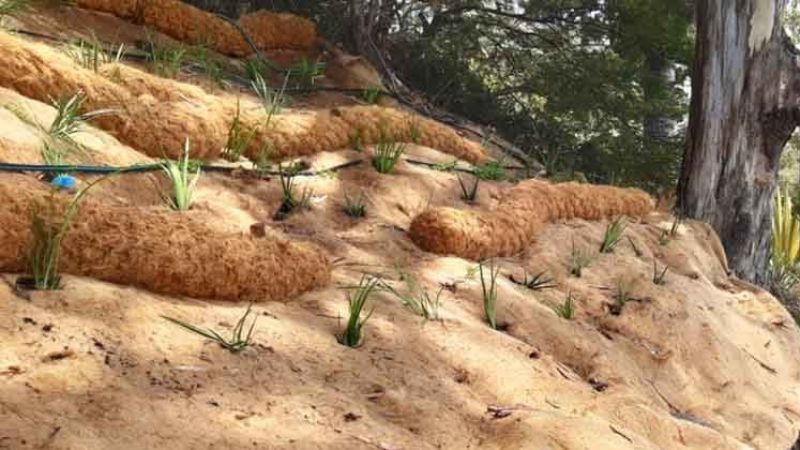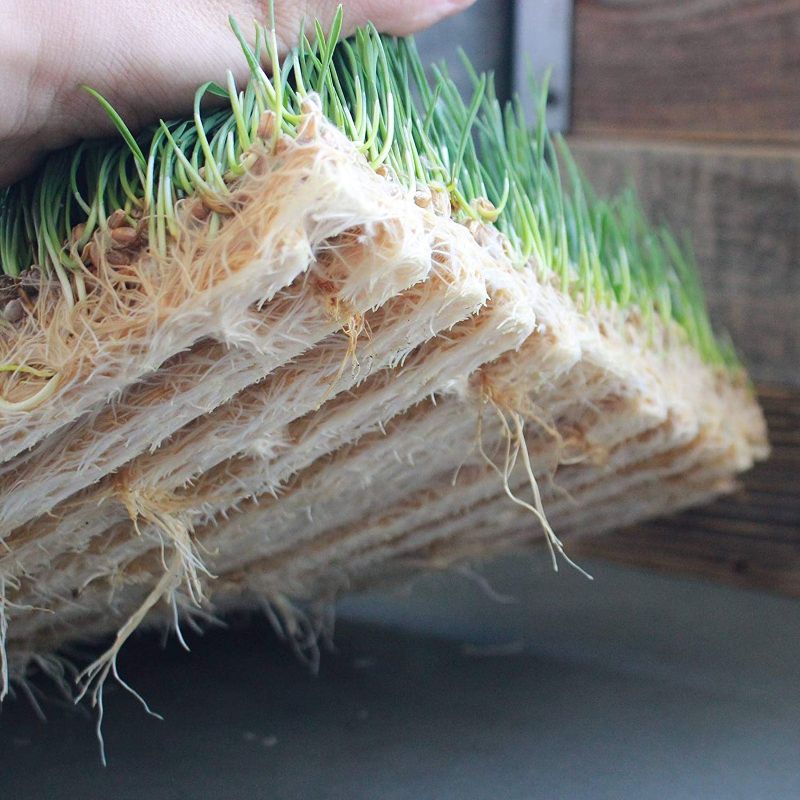There are numerous ways, places, and times of year that soil erosion can manifest. We must protect our land in the proper ways to prevent and even reverse the effects of erosion. After all, failing to manage it can be expensive and dangerous. Jute and coir are significant tools in the toolkits of many landscapes and building experts. Understanding the distinctions between the two, however, helps guarantee that the best solution is used for each project’s unique needs. To help you make the best decision, let’s compare the pros and cons of jute matting vs coir matting, two of the most efficient erosion control products. Apart from being useful, these mats are also aesthetically pleasing!
What is Jute Matting?

One of the oldest and most widely used fibers in the world is jute. Because of its golden and silky feel, it is known as the
“golden fiber.” It is entirely natural and biodegradable because it is made from the white jute plant’s bark. It doesn’t require many pesticides or fertilizers because it can thrive in the tropics. It is claimed to be second only to cotton in terms of price and functionality and has a wide range of uses.
Where Can You Find Jute Mats in Bangladesh?
Jute mats and rugs made by B J Geotextile are soft, lightweight, and aesthetically pleasing. These can help you create a small piece of heaven on earth in your garden while also keeping healthier plants and improving the aesthetics of your home. The company’s mission is to provide high-quality jute mats and carpets at affordable prices while simultaneously protecting the environment.
Jute mats are popular because they effortlessly add an exotic aesthetic and organic feel to any space, whether it be for residential usage or even an industrial site. For people who like the natural beauty of the land and the great outdoors in general, jute mats are perfect. Although jute mats naturally have a brown color, they may be dyed in practically any color and style. You will find a jute carpet that exactly matches your surroundings, whether you prefer natural hues with a brown pattern jute carpet or a flash of color with a monotone red jute mat. Even better, pick patterned jute mats as opposed to neutral colors.
What is Coir Matting?
Coir matting is created from the fibers of coconut husks, unlike jute, which is made from a plant fiber that resembles grass. Coir is ideal for storing moisture, preventing heat and wind from drying up the soil, and producing erosion problems, it is 100 percent natural and biodegradable.
Jute Matting vs Coir Matting
Jute matting and coir matting have different kinds of benefits that you might be seeking. Make sure you consider your options well before deciding on one.
Why You Should Consider Jute Matting
Jute matting is permeable because it is constructed of naturally woven plant fibers, enabling air and water to travel through and creating the perfect atmosphere for healthy plant growth. Similar to mulch in action, it aids in soil moisture retention and reduces erosion on slopes and along the coast.
Because it is thick enough to obscure light while still allowing air and water to infiltrate the soil below, jute matting is also excellent for controlling weed growth. By making tiny slots in the jute mat to plant fresh seedlings, weeds are kept out of the surrounding soil beneath the mat, promoting the growth of new plants. You can find a variety of Jute products on B J Geotextile in Bangladesh.
Depending on your requirements, jute matting can be purchased in a variety of thicknesses and is used for slopes, garden beds, high-wind coastal locations, and more. While thick jute is appropriate for use in sand dune areas, thin jute is lightweight and works well for garden beds. It is an effective weed preventer as well because it blocks more sunlight than other mattings.
Why Coir Matting is Important
Coir matting performs admirably in coastal applications and places where running water is a concern, such as streams and drains, offering a robust, long-lasting defense against erosion even in fast-flowing water. Coir matting, a crucial component of landscaping supplies, has a looser weave than jute and appears more like a netting than a homogeneous blanket.
Although it will eventually disintegrate completely after new plants have taken root and become a permanent part of the landscape, coir netting is both simple to build and resilient. Because of the strength of the material and the weaving process used to produce it, open weave coir matting lasts longer than jute. It can withstand high temperatures, strong winds, the impacts of seawater, and the effects of swiftly moving streams and drains. It is used for landscaping, road building projects, slopes, rivers, and revegetation areas.
When paired with vegetation regeneration, coir matting is very beneficial. Together with the matting, the plant grows to create a powerful erosion defense. For those seeking a durable and simple-to-install material, it is a better option.
This kind of matting is extremely good in preventing erosion and fostering the growth of flora and is commonly used for landscaping, roadsides, mining, and regeneration sites. Additionally, the coir possesses anti-rotting qualities that increase its endurance and benefit plant health. Coir matting is appropriate for use in saltwater areas since it can withstand the harsher elements without being damaged. In comparison to other mattings, it is also less acidic, making it a better choice for soil augmentation and seedlings that are still trying to thrive.
Conclusion
Both jute and coir mats have emerged as the preferred option for many erosion control and embankment projects because of their strength and biodegradability. Jute and coir mats allow landscaping projects to integrate into the landscape and vegetation to take root before the fibers slowly decompose into the environment. They maintain their shape for a number of years, even in difficult situations. In landscaping and drainage applications, coir and jute-based erosion control mats are frequently employed. Consider your applications and choose the right material for your matting!


